
Author
Katharina Krug
CEO & Founder
DE
EN
DE
EN

Author
CEO & Founder
Are you looking for an effective marketing automation tool? In this article, we introduce you to Pardot, a powerful marketing tool that can optimally support you in your marketing activities. Learn how Pardot works and which functions it offers, and discover practical examples.
Pardot is a B2B Marketing Automation software. In particular, this software is designed to help you win leads (also called Prospects in Pardot) and identify potential customers. Pardot is a powerful solution that offers a comprehensive collection of tools that, when utilised together, can help you significantly increase your chances of converting potential customers into actual customers.
Pardot is a powerful marketing tool that can optimally support you in your B2B marketing activities. And I will show you exactly how in this article - from the basic functional features of the application to practical examples of how to use them properly. Moreover, I'll present a decision-making tool to help you choose Pardot or an alternative application for your business.
In short: No. Pardot and Marketing Cloud Account Engagement (SMCAE) are the same application. The background to this is that Pardot was once available as a stand-alone and autonomous tool. In 2012, Pardot was acquired by ExactTarget. The latter company in turn was subsequently incorporated by Salesforce.
Thereafter, Pardot has been increasingly integrated into Salesforce. As a result, it is often spoken of as Salesforce Pardot. This integration has now also been completed by name: in 2022, Pardot was renamed "Marketing Cloud Account Engagement" and is now getting increasingly closer to Salesforce and the Salesforce Marketing Cloud in terms of terminology.
As the application has always been well known under the name "Pardot", I will simply use the former, well-known name in this article. Pardot also seems to me to be much more catchy than SMCAE.
Pardot gives you a variety of functions to set up and send mailings and also to define more complex automation. In addition, the software offers you the opportunity to focus on promising contacts. The following is made available to you for this purpose:
Pardot offers you extensive possibilities for successful email marketing. To do this, you can first create individual templates according to your needs and then simply use them in your mailings.
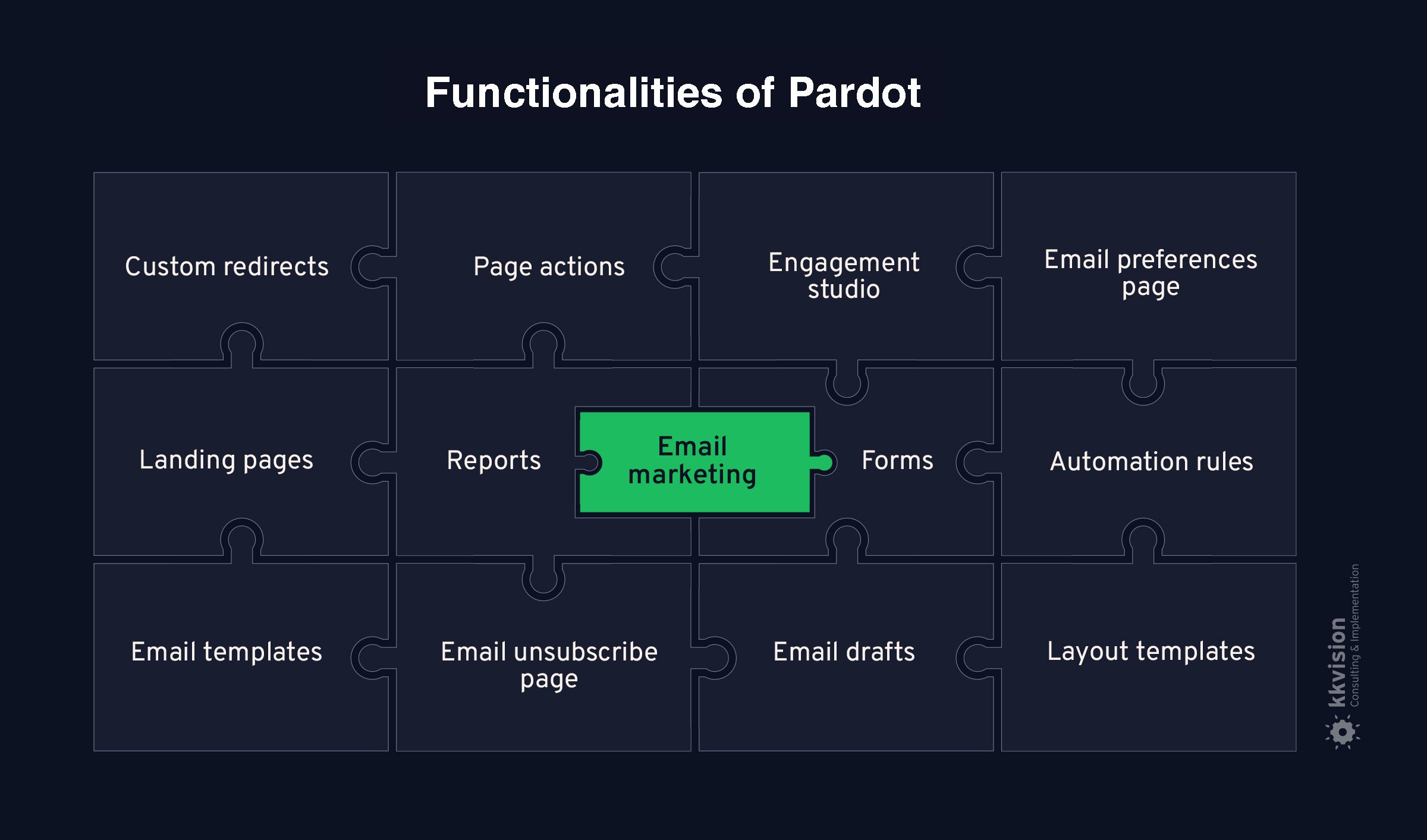
In order to be able to react promptly and adequately to the high number of interactions caused by leads, automation is essential. Pardot offers various forms of automation for this.
With the help of landing pages you create awareness among your future customers. You should also identify what interests the contacts. Forms help you to obtain targeted information about potential customers.
Pardot gives you a very good overview of whether and how contacts are interacting with you. For example, you can see which landing pages a contact has viewed (several times) and whether they open your mailings or whether they lead to clicks.
In order to be able to address contacts more specifically and thus more purposefully, Pardot offers you the appropriate tools for segmentation. Based on specific contact attributes, actions or scorings, segmentations can be created for which you can take specific actions.
Leads or Prospects?
Different terms are often used depending on the application. Potential customers are often referred to as Leads. In Pardot these are called Prospects. The same applies to process automation: While other applications talk about workflows, the magic word for this in Salesforce is Pardot Engagement Studio.
At this point, I would like to use three concrete examples to show you which activities can be implemented wonderfully in Pardot and thus support you in your B2B marketing activities. The scenarios mentioned have their origin in practical case studies of our work as an Email Marketing Agency.
Let's start with a classic example here: you want to provide an entry point into your sales funnel and attract leads. To do this, you offer a white paper that can be requested by visitors to your landing page and is then automatically sent by email. First of all, we only ask for the e-mail address and offer a simple entry into the sales funnel.

In order not to let the communication with the lead come to nothing, we send a follow-up email with a delay of three days. This contains the link to your landing page where the lead can order a sample of your product. If the lead has still not ordered a sample a week after the follow-up email was sent, we will send a reminder email afterwards and remind the lead again of the opportunity to do so.
Through this process, we offer potential customers an easy entry point into our sales funnel. As a result, the lead immediately receives relevant information via automated email with the white paper. At the same time, we use the opportunity to advance the lead in the sales funnel.
Classic cases in Marketing Automation are individual mailings to individual leads or customers, which are based on specific characteristics or actions of the contact. This could be birthday mailings, for example.
Let's take a look at the special case of B2B marketing and the scenario of Pardot in combination with Salesforce. The lead from example 1 ordered a product sample and was then contacted by phone by a sales representative. A consultation was arranged and the date for this was stored in Salesforce.
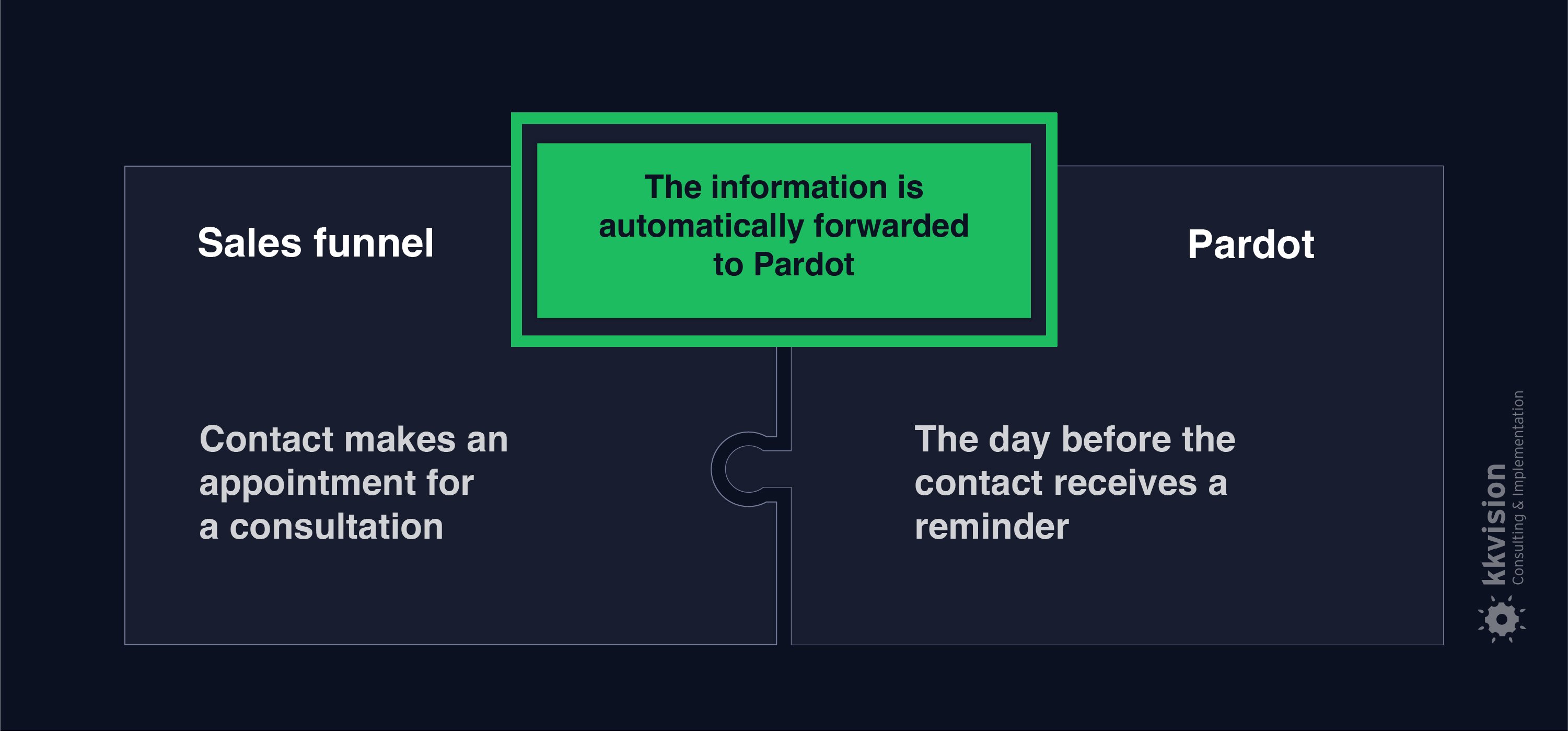
Thanks to the connection to Salesforce, we can also access the date of the consultation on Pardot. We use this and send the lead an automated email one day before the consultation appointment. This allows us to:
An essential piece of information that Pardot provides us as marketing automation is the score of a lead. This value reflects how interested a lead is and how likely it is that it will convert to a customer. This allows us to focus specifically on particularly promising contacts.
It may also be of interest not only whether a contact is promising per se, but also in which product or product category there is a particular interest.
For this purpose, Pardot offers the possibility of individual scoring. This allows us to define different scorings depending on the product. The individual actions of a lead can lead to increases in scoring, such as:
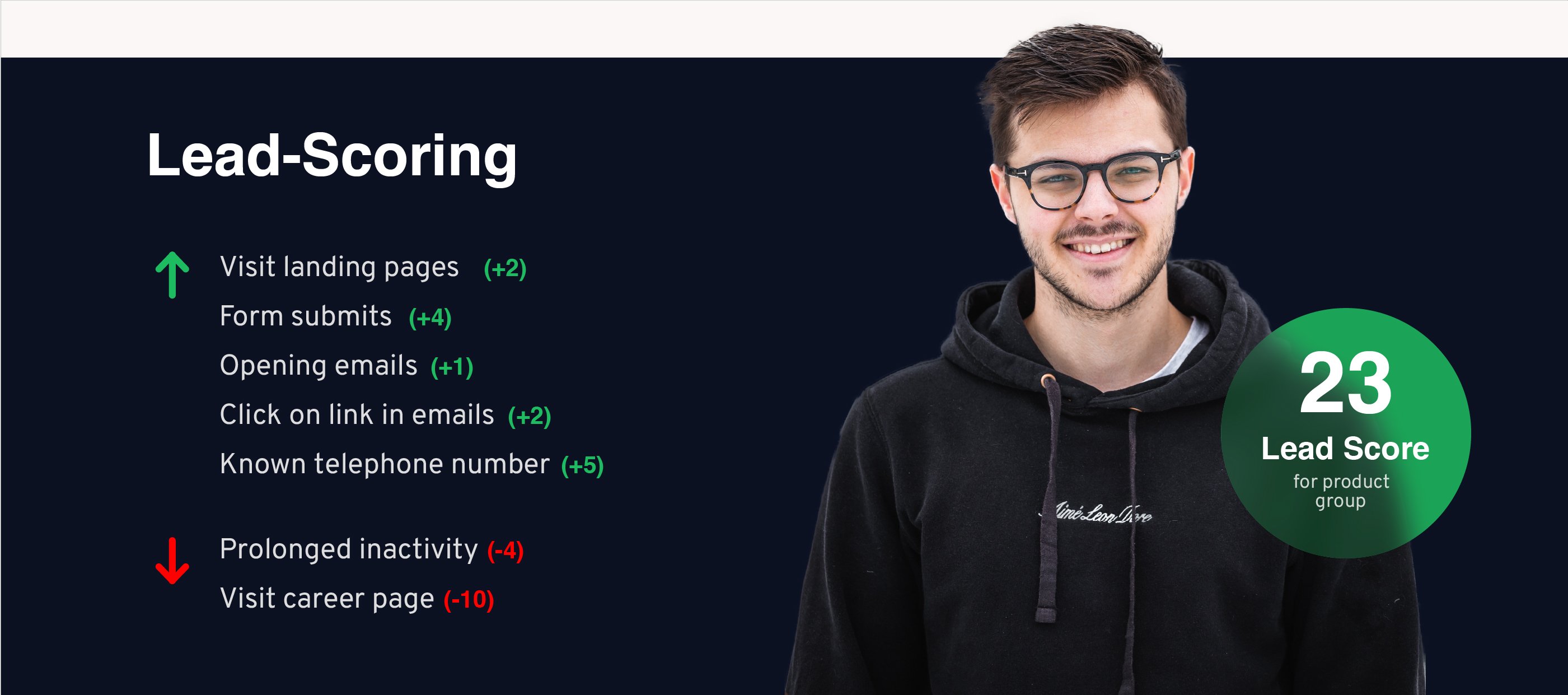
In order to obtain a scoring value that is as valid and meaningful as possible for us, the value is reduced again after a certain period of inactivity. This also allows us to identify leads that are no longer interested.
The three examples should show you what is possible with Pardot. On their own, all three are ideal for relieving you and your marketing team in your daily routine and also providing you with valuable information. But the three examples become particularly powerful when you combine them and can therefore work even more purposefully and efficiently. In this context, Pardot offers you the opportunity to improve your B2C communication and relieve you, allowing you to concentrate on essential tasks.
Anyone who initially deals with Pardot will quickly come across the terms Salesforce, Marketing Cloud and Marketing Cloud Account Engagement. These relationships can initially seem opaque and complicated. Therefore I would like to provide a better perspective on the following. As explained at the beginning of the article, "Pardot" and "Salesforce Marketing Cloud Account Engagement" (SMCAE) are the same application.
As already mentioned, Pardot is a Marketing Automation tool with a special focus on Email Marketing in the B2B area. It can certainly also be used as a standalone application with which e-mail campaigns can be implemented. However, Pardot only develops its particular strength in interaction with Salesforce.
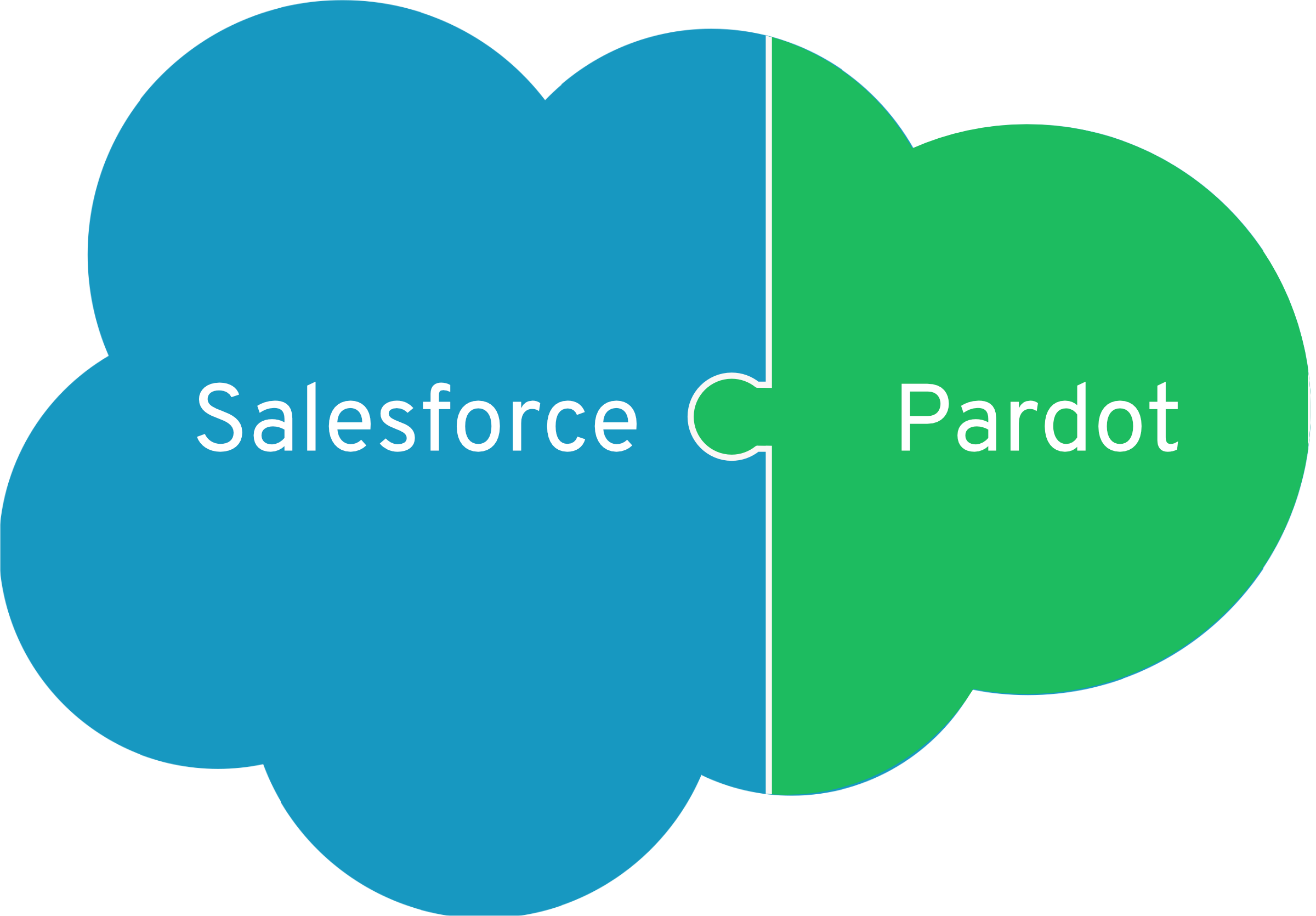
Because Pardot does not offer a function to automatically and structured reuse the information collected in the marketing process. This is where Salesforce comes into play. Salesforce is a powerful Customer Relation Management (CRM) tool. Ultimately, this is where the collected information comes together. It offers extensive configuration options to map the company-specific sales and customer care processes.
In this respect, Pardot and Salesforce can interact wonderfully with each other. Pardot maps the marketing campaigns with emails. The information collected in this way is transmitted to Salesforce and can be used there seamlessly. For example, qualified leads identified in Pardot can be used by the sales team in Salesforce.
At the same time, information from Salesforce can flow back to Pardot and be used there in the campaigns.
The Salesforce Marketing Cloud (often just called Marketing Cloud) is just like Pardot a marketing automation tool - and integrated into Salesforce. What initially sounds a bit vague is explained on closer inspection.
Pardot is focused on B2B email automation. The Marketing Cloud, on the other hand, offers significantly more extensive tools for marketing automation, for example, the integration of social media channels or the sending of SMS. The Marketing Cloud thus puts a strong focus on B2C Marketing.
Accordingly, Pardot and the Marketing Cloud should not be seen as competing alternatives in interaction with Salesforce but rather as specific tools for different purposes. For a more detailed comparison of the two applications and their respective pros and cons, see below.
Are you considering or even deciding whether you want to use Pardot in your company? Or are you swaying between alternative applications like Marketing Cloud or HubSpot? In the following, I would like to show you key points that you should definitely take into account in your decision.
As already explained, Pardot only really unfolds its full potential in interaction with Salesforce. Because then the advantages of both systems can be drawn by using Pardot as a B2B marketing tool and Salesforce as a central CRM tool. The result: Outstanding CRM & Marketing Automation.
The Salesforce Connector in Pardot ensures that Pardot and Salesforce can optimally exchange data with each other. This ensures efficient, bidirectional data exchange between the two applications. This also makes information collected through marketing campaigns visible in Salesforce as a sales and customer care application. At the same time, you can draw on Salesforce information in marketing campaigns.
In this constellation, Salesforce acts as a central and comprehensive information hub. In Pardot, you keep the focus on marketing activities as such. Pardot offers you or your marketing team a clear interface to set up, run and analyze campaigns. At the same time, the information you need for this is available from Salesforce. So your team does not need a much more extensive introduction to Salesforce but can concentrate on the actual core task of marketing.
Do you already use Salesforce or plan to do so and need a suitable marketing automation application? In this case, both Pardot and Marketing Cloud come into play.
With a focus on the B2B space, Pardot has a different focus than the Marketing Cloud in the B2C space. For this reason, the Salesforce Marketing Cloud has significantly more extensive functions than Pardot. This allows leads in the B2C area to be addressed in a more differentiated way (Multichannel Marketing). This is also reflected in more detailed analysis options.
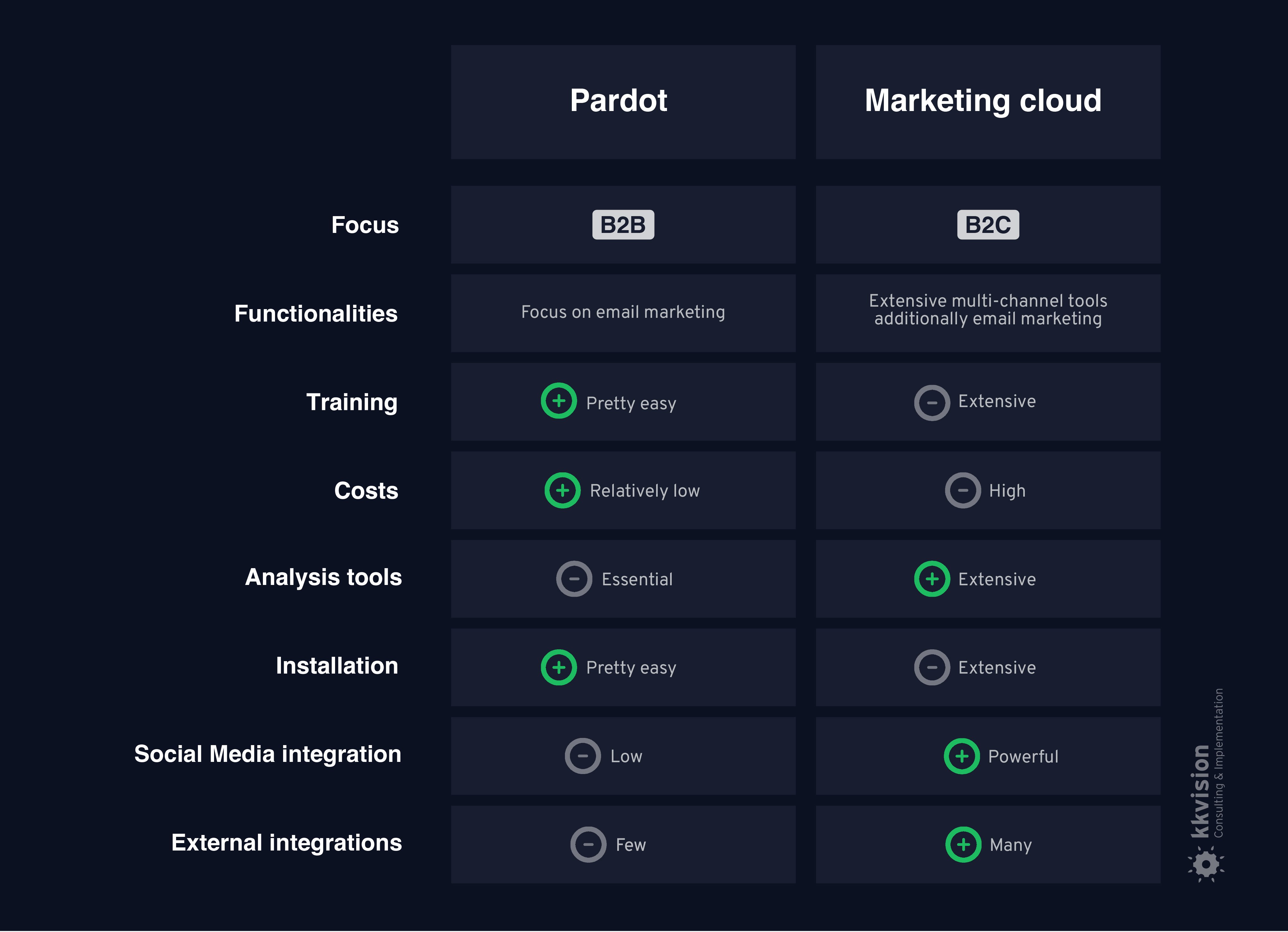
In this respect, Pardot as an application is less complex than the Marketing Cloud. The interface becomes cleaner. This also means that learning the functions requires less effort for you or your team. If you are looking for a marketing application that interacts with Salesforce for the B2B area, Pardot should be an ideal solution.
However, if you want to cover the B2B and B2C area or perhaps even already use the Marketing Cloud for B2C communication, it may also make sense to integrate your B2C communication into the Marketing Cloud.
A common trade-off also occurs between Pardot and HubSpot. Both tools offer the possibilities of e-mail marketing, but the functionalities are clearly different. While Pardot specializes in email marketing as such, HubSpot is an all-in-one application that can also serve as a CRM Marketing Automation and Sales Automation tool, for example.
Do you already use Salesforce as a CRM application or do you plan to do so? In both cases, you are well advised to go with Pardot. HubSpot can also be connected to Salesforce with an extension, allowing information to be exchanged between the two applications. However, the communication between Pardot and Salesforce is much better through the Salesforce connector. In addition, further improvements and a closer approximation of the two systems can be expected in the future.
In addition, the functionalities of HubSpot and Salesforce largely overlap. That means you're paying for a lot of HubSpot features that you probably don't use. Pardot, on the other hand, offers you a smaller but effective extension to Salesforce.
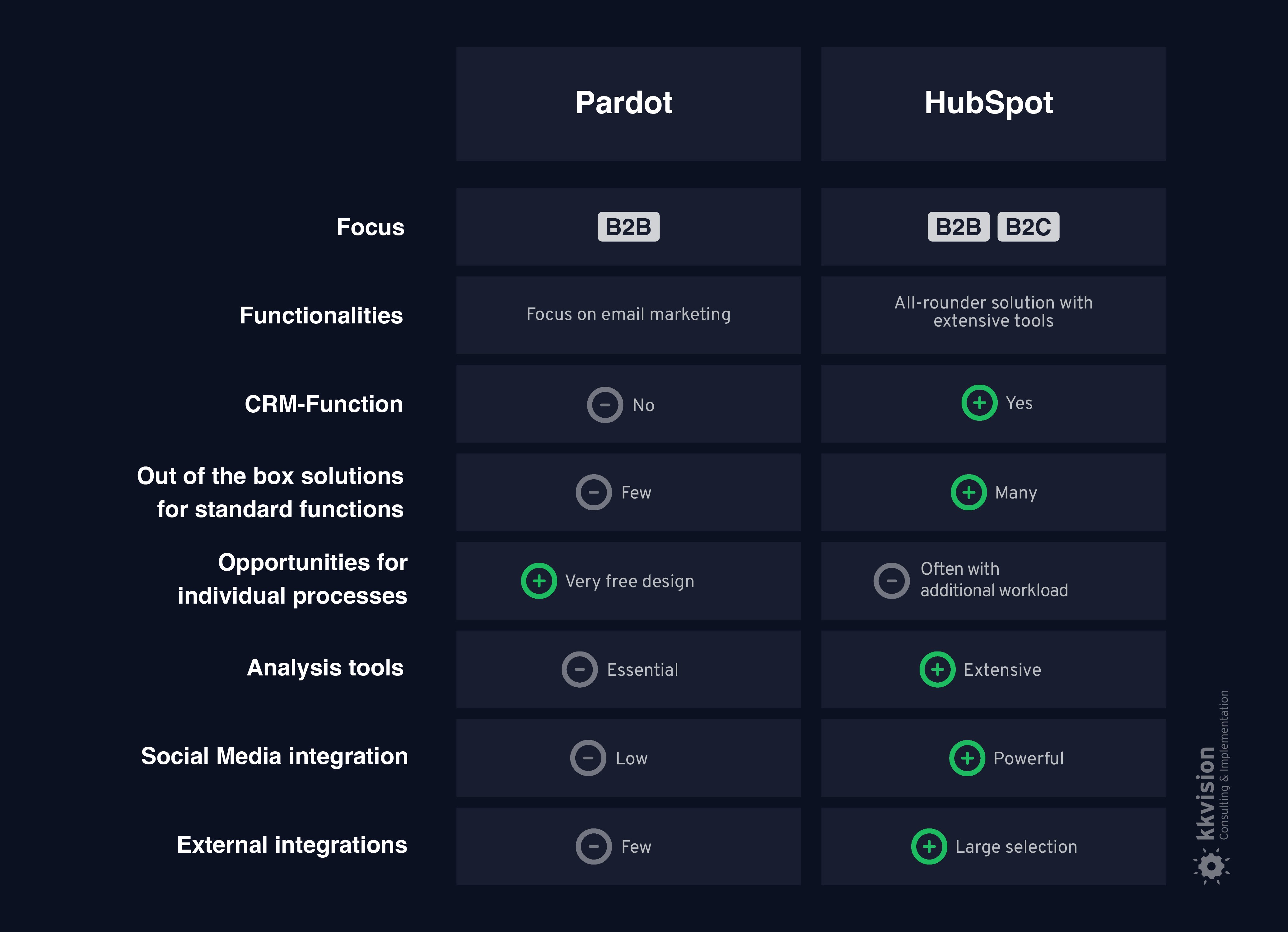
HubSpot particularly scores with its users with out-of-the-box solutions. For example, a native double opt-in (DOI) process and subscription lists are built in and are very easy to manage. Pardot doesn't offer this easy enablement. Instead, such processes and structures have to be set up themselves.
What initially appears to be a disadvantage, however, also offers a great opportunity: The self-defined processes and structures offer you a great opportunity for individualization and adaptation to your corporate structures.
In addition to the previous questions, it is also relevant which other applications you use in the area of lead generation and customer care. As strongly and well as Pardot has been connected to Salesforce in recent years, connections to other platforms have been less well maintained. HubSpot, on the other hand, offers an extensive collection of integrations that are very easy to set up.
Like any marketing automation software, Pardot should support you and your team in your daily marketing processes. It is all the more important that you master the application and can use it in a targeted manner, for example, to set up campaigns and send out mailings.
To get the most out of Pardot, a Salesforce agency can support you with competent advice and support in the following phases:
By analyzing your business processes and individual requirements, Pardot can be set up specifically to suit your needs, and the environment for successful campaigns can be created.
An agency can support you and your marketing team in your routine tasks and plan and implement upcoming campaigns to give you more time for other tasks.
Even a well-running system requires targeted care and optimization over the long term. An agency can support you in this and leaves you free to focus on the actual marketing.

About the author
Recently, kkvision implemented a comprehensive digitization project with the catering company Last Exit, from which the company benefited greatly right from the start. Find out here how a catering...
A suitable strategy is needed for CRM to succeed. It is necessary to ensure that customer relationships are successfully managed and lived in the company.
Combine the power of your CRM with the efficiency of artificial intelligence. Find out in this article how you can give your marketing an extra boost with the help of ChatGPT.